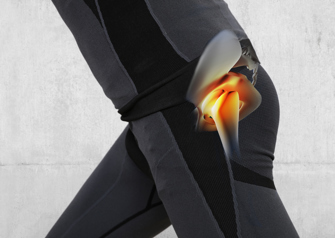
News
How Do I Know if My Hip Pain is Serious?
Date posted: 8/15/2019
Last updated: 8/20/2019
Table of Contents
Hip pain can present in many ways. In some cases, patient can describe hip pain after a strenuous work out. In other cases, some patient may describe hip pain after a head on collision after a motor vehicle accident. While those two scenarios may represent two extremes, patients may have pain in both of those situations. The key difference between those two cases is the mechanism of injury or how much energy is required to cause pain. Some other key components of your injury —were you are able to put weight on your leg or were you able to stand, did you hear a 'pop', did you notice immediate swelling or bruising. If you experience these injury patterns, then you should seek medical attention immediately.
How to understand hip pain
Some issues that may affect your pain with recreational activities could be related to a recent increase in activity in terms of volume or intensity. Dr. Shane Nho, a hip preservation specialist, shares some insight into hip pain below:
- If your hip is painful after strenuous activity, but are able to go about your regular daily routine, then a period of rest, ice, compression and elevation is helpful. In most cases, exercise related symptoms should begin to normalize after several weeks.
- If they do not, then you should consider consultation with a health care provider. Many patients may improve with a course of physical therapy directed at addressing areas of pain and muscular imbalance.
- Most hip pain is located in the groin area but a patient may also experience pain in the lateral hip or posterior hip. In addition, there are other areas of the hip and pelvis that may also be affected such as the lumbar spine or sacrum. The physical therapists are excellent first line treatment for many hip, pelvis and lumbosacral malalignment or weakness.
- If symptoms persist or if you are unable to perform activities that you are accustomed for a couple months, then consultation and examination with a hip specialist is recommended. The hip specialist will likely order additional x-rays, MRI or CT scans to help make a diagnosis. Depending on the diagnosis, there may be either targeted physical therapy or injections recommended. The goal of each of these treatments is to directed at the source of the pain.
- If the clinical history, physical examination, and imaging studies are consistent with a structural problem with the hip and pelvis which is not responsive the other treatment, then surgical treatment may be an option.
To schedule an appointment with a physician at Midwest Orthopaedics at Rush, call 877-MD-BONES or click to request and appointment.
